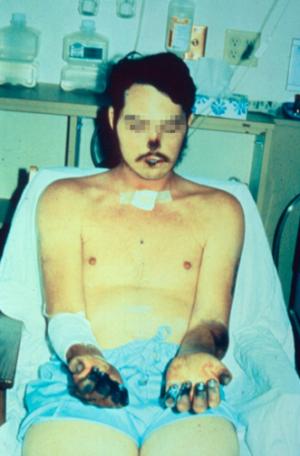The Chinese city of Bayannur in the inner Mongolia region has issued Level III alert on Saturday, August 8 after a patient died of multiple organ failure due to bubonic plague. As per local health authorities, the warning will continue until the end of 2020. This is the second death due to the disease that was first reported in July.
The person was confirmed positive on Thursday, August 6 and all of his contacts were put under quarantine while the area where he lived had been sealed off by the city's health department. However, the good news is that all of them have tested negative as per China's state-run media People's Daily.
Another person had died of "intestinal-type plague" on Thursday in Baotou city which is close to Bayannur. "At present, there is a risk of a human plague epidemic spreading in this city. The public should improve its self-protection awareness and ability, and report abnormal health conditions promptly," the local health authority said in a statement.

The Level III alert is the second-highest in the four-level warning system. The alert forbids eating of animals that could spread the disease. The alert also urges people of the region to report any suspicious cases of fever and dead animals and marmots.
Black Death
The plague is caused by the bacteria named Yersinia pestis. It is transmitted through rodents. The highly contagious disease causes fever, coughing, vomiting and swollen lymph nodes. The disease also causes necrosis of skin tissues due to which the black spots on the body appear. Thus, the term black death was used in the Middle Ages when the disease killed around 200 million people all over the world.
There are three types of plagues — bubonic, pneumonic and septicemic. The last one mostly causes necrosis of tissues. While there is now treatment for the disease, if left untreated, the fatality rate is 30-100 percent within three to seven days of contracting.

"Although the plague has been responsible for widespread pandemics throughout history, including the so-called Black Death that caused over 50 million deaths in Europe during the fourteenth century, today it can be easily treated with antibiotics and the use of standard preventative measures," the World Health Organization (WHO) says.
Recent Outbreaks
Although the disease surfaces rarely, last month (July), several cases of bubonic plague were reported in Bayannur with the city authorities sealing off tourist spots.
A 27-year-old man and his 17-year-old brother were admitted to the hospital after developing symptoms. They had reportedly consumed marmot meat. The area was sealed and close to 150 people were isolated for coming in their contact. In the Mongolian province of Govi-Alta, a 15-year-old had also died of the disease last month. In the U.S. state of Colorado, a squirrel was tested positive of the bubonic plague and a health warning was issued.
In Madagascar, two separate outbreaks were reported. The first one that lasted from August 2014 to February 2015 infected 263 people and killed 71. The second wave of the outbreak was even bigger that lasted from August 2017 to early 2018. The authorities reported 2,575 suspected cases with 221 deaths.
As per WHO, the disease has not been eliminated and can occur occasionally. However, antibiotics are available to treat patients effectively. But there are parts in the world where the disease can still recur.
"According to 2016 data, the possibility of plague exists on almost every continent, especially the western United States, parts of Brazil, scattered areas in southeast Africa and large swaths of China, India and the Middle East," the WHO said in a report.









